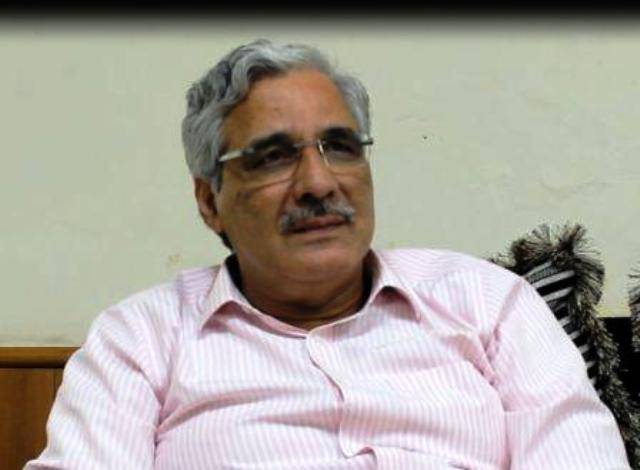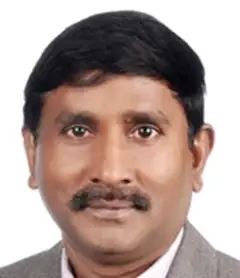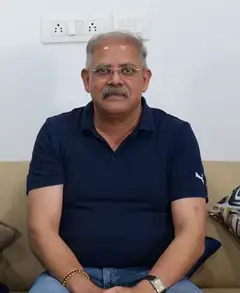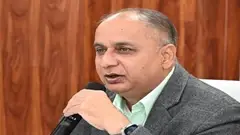
When we talk of agriculture, numerous branches which makes up this big tree comes up in the picture, branches in the form of farmers’ toil, seed, farm mechanization, market linkage and many more, and one of the most important phloem(connectivity) which connects all of these is Policy framework. Krishi Jagran team had the opportunity to sit over tea with Dr. Suresh Pal and discuss some major issues affecting agricultural scenario in India and its effects on the economy. Dr. Suresh Pal is Director at National Institute of Agricultural Economics and Policy Research NIAP, India. He also served IARI during 1986-96 as an agricultural economist responsible for research and post-graduate teaching. Dr. Suresh Pal's current research interests include technology-trade linkages, intellectual property rights, biotechnology, and science and technology policy.
The discussion started young, with the subject of involvement and contribution of youth in agriculture sector, which has only decreased in time. Mr. Pal outlined numerous reasons for it, which makes the youth disinterested in the agricultural sector. One of the major reasons which drives away our youth is the low profitability this sector has, investments poured in the form of labor in harsh weather conditions, lower wages and lower income levels makes this sector non-preferable when compared with the fancy secondary or tertiary sectors. Our rural society has many lacunas, dearth of infrastructure which makes the young generation non-attracted to the villages, where most of our agriculture prevails. Taking the topic to a notch up, Mr Pal threw light on how an economy blooms stating Development is directly proportional to involvement. As our villages would develop, more population would be focused on agriculture and would practice it in rural areas. In the current scenario he mentioned that we have examples where people have left services and joined agriculture like, poultry, dairy and animal husbandry, floriculture and horticulture segment etc which are also viable in the urban settings.
The conversation followed in context of falling GDP in agriculture sector and how can the govt. increase the growth rate. Dr. Pal taking a wider prospect mentioned that as the economy grows, the contribution of agriculture decreases throughout the world. The US has seen the same graph and so India is witnessing. The GDP gap is filled by the industry and service sectors, which grows rapidly as the economy transforms. Unlike agriculture, secondary and tertiary sectors need only capital and generate high demand. Comparatively, on the contrary agriculture has limited growth. Comparing earlier days’ agriculture with today’s, growth rate should increase and it indeed is increasing and hence agriculture is sustaining in India. Technology have evolved and have advanced with drip irrigation, bio-pesticide etc. making the efficiency high. In totality, Income level of farmers should increase. He stressed that the conditions today are positive, India has witnessed bumper harvest of food grains of 275 – 278 million tonnes and horticulture had production of 286 million tonnes which is a record production.
Stretching the discussion to MSP in other produce Dr. Pal stated that the as of today, govt. provides MSP in 23-24 commodities. The scope has widened itself to take in rice, pulses, sugarcane FRP (Fair Regulatory Prices), cotton, jute etc. The procurement process is not limited to govt. sector. Public Private Partnership has been a helping hand to the farmers as well.
Lately, Wastage of the buffer stock has been taking the highlights in the dailies. Commenting on this, he drew attention towards the lack of storage infrastructure and procurement centers in the tough terrains like eastern India. Most of the problem lies with the perishables. But the FCI, State govt. and the PPPs are trying hard to bridge the gap with scientific storages and capacity augmentation. Loans are available for the farmers to access the storage infrastructure and capacity has multiplied by 2-3 folds.
When intrigued of the dilemma about lack of infrastructure and technological penetration in rural areas, he stated that farmer today are much aware and inquisitive of the technology and advancement in farming. The various stakeholders including govt, media and extensions are making efforts to educate the farmer, to which the farmers respond affirmatively. Today, cellular phones can work like a mini-computer and satisfies the basic needs and they serve as the source of first information of market connectivity, commodity information, mandis’ information, storage, market access etc. DD Kisan, is also a good source of knowledge for the farmers which is made accessible. Infrastructure is needed to be developed and it would take pace but rendering information is the first step.
Talking about the organic farming and its sufficiency to feed our second largest population of the world, he said modern agricultural practices has to follow likewise for sustenance of organic products. Western and Southern regions of India is doing wonders with protected cultivation. Consumers are ready to pay high prices for organic products. Places like North-Eastern India, where use of chemicals is limited are most sought after organic farming fields and markets.
Talking about GM technology, he said, science and technology addresses problems to find better solution and are evaluated properly, keeping the risk factors, product quality, environment, health factors etc before delivering the advancement to the society. The different stakeholders in the picture are scientific authorities, Policy makers and Decision makers. They all have their different roles and concerns, which we should respect. BT cotton has worked well, and has potential advantages which cannot be denied.















Share your comments